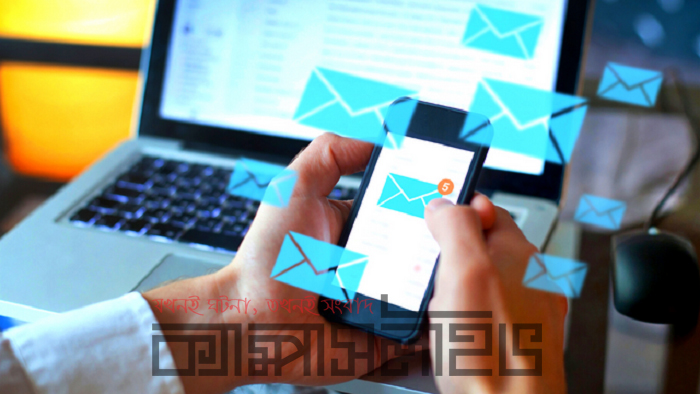How to write an effective email?
Published:
2022-10-21 00:31:05 BdST
Update:
2024-04-26 23:05:03 BdST

Electronic mail, known as email, is one of the most efficient methods of communication. The exchange of brief informative messages between at least two persons through a computer network is known as email communication. It is much more informal than writing a letter or making a phone call. These communications are transmitted using web-based services and contain simple text, graphics, or document attachments. Different people have differing views on the format and content of emails. It is simply a more efficient method of sending a formal letter. The usage of email for workplace communication is beneficial to many organizations worldwide. However, there are some situations where email is not the most appropriate mode of communication.
Before writing an email, the message should be thought about. First, the purpose of our email should be decided, and what outcome is expected from the communication. Then one should be thought about the message's audience and what may be needed for the message to have the intended result. So before writing, it should be ensured that the email message is necessary to send. When the information is long and detailed, or when more discussion is required, email is not an effective method of communication. If someone wants feedback on work from his supervisor or a query that demands more than a written answer or a basic explanation from his supervisor, he should schedule a meeting instead. The CC or BCC should not be used for anyone who does not need to see the message. In terms of a company email, the company email policy should be followed, understanding the company's restrictions on email usage. The chain of command should also be followed. Before sending an email should be kept in mind that someone may forward an email message to other people without the sender's knowledge. A backup copy of our email is permanently stored on a server where interested parties can easily retrieve it, even when the sender has deleted the email and think it is gone forever. We should not send an email if the tone of the message could be misconstrued. If we hesitate to say something to someone's face, we should not write it in an email.
Business email is more formal than personal email. The email message carries the same legal weight as other business documents. So proper attention should be paid to the quality of writing and the use of correct grammar, spelling, and punctuation. The purpose of the message should be identified. The first few words of the email body should be used to catch the reader's attention. Email should never be typed in all caps.
The first essential part of an effective email is the "Subject." Email subject lines are like newspaper headlines. It should obtain the main point of the email or the idea. Therefore, it should be as specific as possible. One-word subjects such as "Hi," or "Question" should be ignored as they are not informative and do not give the reader an idea of the message's importance. If the message is time-sensitive, it might have to include a date in the subject line, for example, "Meeting on Thurs, June 24." The title of an email is also essential. A good title increases the chance that people will actually read our email rather than just leave it for later.
Some greetings and sign-off should be in the email. Email should not just start with a text, and do not stop at the end without a polite signature. If the person is not well known, the sender may be confused about how to address him/her or how to sign off. However, it is more beneficial to make some effort. When in doubt, address somebody better formally to avoid humiliating them. Some common ways to address the readers are Dear Professor Abdullah, Hello Mr. Raza, Hi Shakila. If the person's name is unknown, or if the email addresses a diverse group, one can try something generic but polite: To whom it may concern, Dear Members of the selection committee, Hello everyone.
The closing of an email is also significant because it lets the reader understand who is contacting them. It should always be signed off with the sender's name at the end of our email. For the closing, something brief but friendly, or perhaps just the name, will do for most correspondence: "Best wishes," "Regards." For a very formal letter, such as a job application or a business letter, the sender should write: "Sincerely," "Respectfully yours." Email signatures actually cover basic information such as name, job title, and contact details, including extension numbers and links. It should be used on all initial emails. Responses to emails received may carry a shorter signature (name and telephone number).
For the email, the letters CC and BCC stand for carbon copy and blind carbon copy, respectively. In an email, copying persons is a handsome technique to convey the message to the primary recipient while sending a duplicate to someone else. When it is necessary to send the same message to several people, simultaneously copying someone else on an email in a professional context can assist get things done, especially if the individual getting the copy is a supervisor. Copying the boss on an email to a nonresponsive employee could get the coworker to react. However, one should be aware that when he uses the CC field to send a message to several contacts, both the original receiver and all recipients of the carbon copies may see all of the email addresses and CC fields. So everyone who gets the message will see the addresses of everyone else who has also received it. When someone does not want everyone on the list to know each other's email addresses, blind copying emails to a group of individuals can be helpful. All receivers will be able to see only one recipient address. The main address should be in the 'to' box, and only utilize BCC to address the message to others if the sender does not want any recipients to view the email addresses in the list. However, blind copying may not always ensure that receivers are unaware of who else was copied. When someone gets blind copied, they may hit "reply all" and send a message to everyone, showing that he was included in the original message.
After writing an email should be revised and proofread carefully to avoid embarrassing mistakes. The messages should be kept clean and straightforward in an email. Sending a long, complex message should be avoided. Senders should give recipients their contact information in the signature section. Most importantly, the recipient list should be double-checked before sending.
The email message should be appropriately formatted so that it is easy to read. Space should be used to separate paragraphs into separate blocks of text. Essential details can be bulleted so that they are easy to pick out. Boldface type can be used or capital letters to highlight critical information, such as due dates. Senders should re-read messages before they send them. Spelling and grammar checkers can be used if the email program supports them. Because the words are not backed by gestures, voice inflections, or other indicators when communicating by email, it may be more straightforward for someone to misunderstand the tone. Sarcasm and humor, for example, are frequently misread in emails and may irritate the readers. Similarly, the sender must be cautious in how he addresses the audience. For example, starting an email to the professor with "Hey!" might be seen as impolite and arrogant.
In terms of establishing a clear subject title and indicating any important actions, the same criteria should be used when forwarding or replying to emails as when sending them. When forwarding emails, be sure the material is not private and can be shared with others. Senders should avoid sending massive files as attachments via email if possible. Public folders or shared drives should be explored as alternative file-sharing solutions. The attachments should be identified in the body of the email. To correctly manage inboxes, read emails stored in personal and shared folders, as needed.
Email is one of the most popular internet communication applications. According to Statista, in 2020, the number of global email users will reach four billion, and it will grow to 4.6 billion in 2025. In 2020, about 306 billion emails were sent and received worldwide. So, with that condition, it makes sense that we need to use email effectively to save time and ensure that our messages get read by our audience correctly.
Topic:








Share Your Valuable Comments: